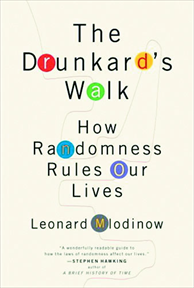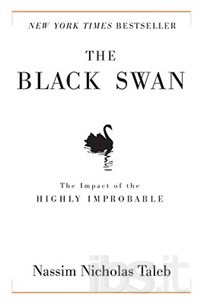The Drunkard’s Walk
The Drunkard’s Walk: How Randomness Rules Our Lives is a book about randomness and probability by Leonard Mlodinow.
It is well researched and written. He talks about a lot of the other research cited by similar books, and basically anything that references Daniel Kahneman is probably on the right track. Why Kahneman? Possibly because his research is the best. Or possibly because Kahneman’s work reached the critical mass to make it more popular than anyone else. I would seemed to have missed the point of the book if I didn’t accept that as a possibility.
Mlodinow talks a lot about luck, and how much that is a part of the most successful people. It is a massive part. I often describe it as “the one thing Malcolm Gladwell got right”. See my review of Outliers.
I was already familiar with most of the content of the book, but it was good to have a reminder. Take these points for example:
- We judge more specific scenarios more likely than general ones. The classic example is a character description of a feminist. We judge “she is a feminist and a bank teller” to be more likely than “she is a bank teller” even though B is contained in A so must be at least as likely.
- The two daughters problem. If a family has two children and one of them is a daughter, what is the probability that they will have two daughters. It might seem like a half, but the answer is actually a third. This is because there are four possibilities (boy boy, boy girl, girl boy, girl girl) and we only eliminate one (boy boy) by saying they have one daughter.
- The two daughters with a name problem. What are the probabilities of a family of two children having two girls if they have a girl named Florida? The answer is a half, not a third. This is because families with two daughters have two chances to have one named Florida.
The answers to these questions are often not obvious at first. It took me a bit of time to get my head round them. But that is the point. Humans do not have an innate understanding of probability, we’re actually pretty bad at it a lot of the time.
Then some of it is downright confusing. Take for example the gambler’s fallacy and regression towards the mean.
In the gambler’s fallacy, people think that if black has come up ten times in a row on a roulette wheel, red must be due. Of course it isn’t. The odds are still 50/50. At the same time, if you have just had a really good of ten bets, the odds are that your next run of ten bets will be less good because of regression towards the mean. Holding these two concepts in your head simultaneous and knowing which to apply in each situation becomes incredibly confusing.
There are some other great examples in the book too.
DNA testing is often described as almost perfect. The changes of DNA being confused are incredibly small. Whereas the chances of a witness being wrong are quite high. For more details read The Invisible Gorilla by Christopher Chabris and Daniel Simons.
They correctly point out that faced with witness testimony vs DNA evidence, the DNA evidence is far more likely to be accurate. However, the odds are not millions to one that it will be wrong. Sure, the test itself is that good. But the chance of human error in the lab might be 1%. Thus it will still only be accurate 99% of the time.
Alcohol was another interesting topic. I’ve written several times before about how humans cannot tell the difference between cheap and expensive wine. Mlodinow quotes even more studies. In one, they labelled two bottles as $90 and $10 and subjects judged the expensive wine to be better. They were the same wine in two bottles. In a second cited experiment, food colouring was added to white wine and subjects were then served the same wine in “white” and “red” forms, claiming they could identify the differences.
Something also struck close to home was similar tests on vodka. Mlodinow points out that vodka is naturally without character, so most of it is marketing. Indeed, in a blind taste test, critics could not tell the difference between expensive brands such as Grey Goose and Ketel One and cheap brands – ultimately rating Smirnoff as the best.
I have done a taste test between Smirnoff, Absolut and Grey Goose and there was a clear difference. However, it was not blind and this study suggests that if I did it blind, I could not tell the difference (which I suspect is the case). It’s a good reminder of the power of expectation.
Mlodinow concludes the book by talking more about luck and how successful people are mainly just lucky. That is not to say that they do not tip the balance in their favour by being talented as well, but if you look at someone like Bill Gates, he himself admits he has been lucky to get where he is.
There is an important message to take away from this though. Because it is not innate, and there is a luck element, that gives us control. If we can control how many coin flips we take – in the form of how many times we try, be it in business, learning a new skill, whatever it is – the more chance we have for it to come up heads.

